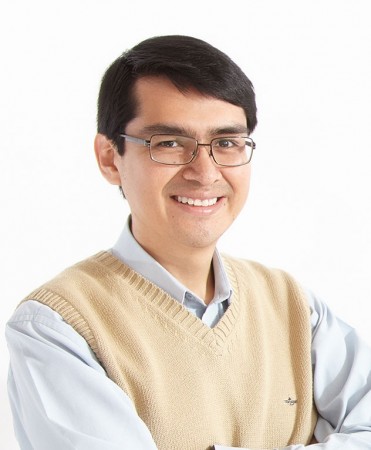
ESolutions: optimizing electrical distribution network design
by Student Energy

Cleantech Canada's Youth Profiles is a series of Q&A interviews with some of Student Energy’s most innovative clean technology entrepreneurs and researchers around the world.

Jose Luis de la Cruz is the CEO of ESolutions, a software developer that optimizes electrical network design
ESolutions is a software developer for low and medium voltage electrical engineering founded by Jose Luis de la Cruz while he was at the National University of Engineering.
Give us the elevator pitch on your work
Every day, thousands of feet of electrical distribution networks are installed; but these installations are not optimized. The amounts of both electromechanical materials used and number of engineers working on design are much higher than what is required.
To solve this problem we have created ESOLUTIONS – software for electrical engineering. Our programs: REDCAD, REDLIN and TOPOMAGIC, optimize time, cost, planning and construction of electrification.
REDCAD is used for the design of electrical distribution networks, REDLIN for the design of power transmission lines and distribution lines, and TOPOMAGIC for editing and processing topography for power lines and distribution networks.
This software is customizable and configurable to the rules of any country – in both urban areas and rural areas.
When our software is used in rural electrification, the profits are a result of optimizing grid extension technology.
We hope REDCAD, REDLIN and TOPOMAGIC will soon be accessible via smart phone. When this occurs, engineers will be able to design electrical networks when in the field, while doing compliance validation. This will virtually eliminate design time spent in the office.
Tell us about the spark or initial “aha” moment that led to you pursuing this work?
11 years ago, my boss at an electrical engineering consultancy made me realize that the rural electrification problem in my country needed solving.
What have been the biggest challenges for you to date?
Integrating mechanical design, electrical design and topography in a single set of software tools. These tasks are generally performed by different specialists (e.g. civil engineers, electrical engineers, surveyors, CAD draftsmen), but with our software it is an integrated and unified process.
What sources of funding have you attained so far?
Our company employs the ‘bootstrapping’ philosophy. In other words, we finance our operations with the revenues we earn, rather than with external funding. This structure makes us focus on what our customers want. This system has worked for the 4 years we have been in operation and has resulted in the acquisition of 20 major clients in Peru and other Latin American countries.
What’s next on the funding and revenue front?
We are looking to expand into new markets in Latin America where rural electrification challenges mirror Peru’s.
Compare your jurisdiction to other jurisdictions on the cleantech front (i.e. legal, funding, community, culture etc.)
Starting in 2011, the Peruvian government began supporting academic-based research projects. There is definitely a gap in support for non-academic ventures.
What is one thing you would change in your jurisdiction to further spur the cleantech industry?
I would like to see more support for teams of researchers with grants/scholarships to study at foreign universities and work on specific problems.
Where you see yourself in 10 years?
I would like to see our company with a wide market position in Latin America.
What advice would you give to other students researching or working in cleantech?
If you have an idea that can change an existing paradigm, bet on it, and move with your passion, persevere and be patient.